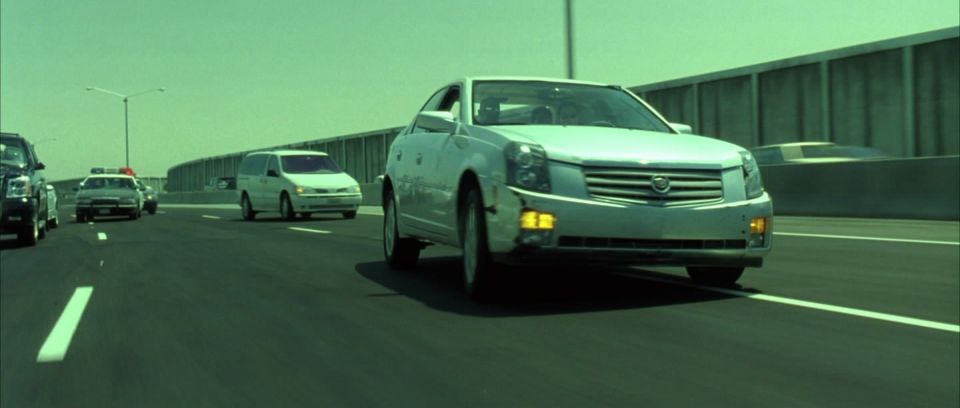
 Archival interview with J.D. Sansaver from the official Matrix website.
Archival interview with J.D. Sansaver from the official Matrix website.
MATRIX: Why are models being built for THE MATRIX sequels?
JD: The models we’re working on are more like architectural models, in the sense that they are not a full on finished model. These models are for the Directors to study and take from the computer to real life. Sometimes there are glitches when crossing over from reading blue prints, a set doesn’t always work, so we’re here to make sure it works, to get it into physical 3D. Being a model maker, the big battle is fighting being taken over by computers. I see the computer as a great tool, but I have all these other tools that I use, so the battle for me is not getting left behind.
MATRIX: How long have you been building models?
JD: About five years. I was an art student and moved out here because all my friends went to film school, and they all came out to Los Angeles to do something with the film industry. One of my best friends is a model maker, he got me in on my first show, and it’s been a blast, I love it. You get to make some cool stuff.
MATRIX: What other projects have you worked on?
JD: Supernova, and Armageddon was my first big sci-fi, which was fun, the models we got to make on that were a blast. Sci-fi movies have the best work, it’s as good as it gets making things.
MATRIX: How did you get involved in THE MATRIX sequels?
JD: My friends. My work comes through my friends when they need some help, and we get along well. A lot of this is just how you get along with people – your skill level does matter, but a lot of people are willing to deal with someone who is not quite so skilled if they’re easy to work with. Ben [Edelberg, Model Maker] brought me on to the project to help out for a couple of weeks, and it’s been a month and a half, so I’m kind of coming in on the tail end of things.
MATRIX: What, specifically, do you find yourself working on?
JD: I came in on the end of the Docking Bay and helped do some little details on that. I haven’t read the script, but I’ve heard good things about THE MATRIX, that it’s going to be an attempt at some decent sequels. That’s the big thing, there are not a whole lot of decent sequels, even Star Wars I thought was completely disappointing.
MATRIX: Are you talking about the fourth Star Wars?
JD: Right. The other three were fine.
MATRIX: What did you think of THE MATRIX film?
JD: I loved it. It’s been a while since I saw a good sci-fi movie. I just sat back and watched it, it was awesome. I went in with low expectations, so that helped, I’m sure. It’s a good story, something kind of new, not totally new, but new enough.
MATRIX: How was it being introduced to the work that had already been done?
JD: It was cool seeing the Docking Bay. I saw the movie of course, and Zion was just this thing they talked about as paradise almost, then to see the entrance to Zion is pretty huge. One thing I thought about was, if Zion is so big, how can it be a hidden thing? I mean this is a gigantic thing that is not very well hidden, but I don’t know what the outside looks like and if it’s hidden in some way by some special thing.
MATRIX: What tools do you use?
JD: For most of the models we’re using lots of paper and foam core. The Docking Bay was plastics, but foam core is cheaper and faster, because these aren’t fine tuned models, they’re basic shapes for the Directors to get a sense of visual space. It’s clean, which is good too, there’s not too much sawdust, although it is a little bit toxic – the glues are toxic. Super glue is the bonder of choice, just because it is so fast.
MATRIX: I know it varies, but how much time would you say you spend on an individual model?
JD: It is always funny, the Directors come in and they’re like, “Just make a couple of those real quick.” The set of stairs I’m working on right now seems pretty simple, but I’ve spent three or four hours on that today. The underground dwelling has columns that go all the way across, and there are sixteen of those columns – I counted seventeen parts to each one, and it took me 3 days of just the same piece over and over. It takes a lot of time, there’s no fast way to do it. You have to hand cut everything, and you’ve got to figure layout, it’s pretty time consuming. I’m not very good at figuring out time because it always takes longer than you think it’s going to take. That’s the fun, laying everything out, then figuring it out.
MATRIX: Is there anything you’re particularly looking forward to seeing realized?
JD: Modeling is one of the beginning steps, to see sets from 3D renderings to the first real 3D image; to see what everything is really going to look like is going to be pretty fun. Usually, when we build models, that’s exactly what they’re going to look like, depending on how they’re shot, but this is going to be totally different. The films are two years away, so it’s going to be a long wait. You work on jobs and almost forget about what you’ve built, then you’re like, “I remember helping on that thing.” I’m excited about the whole movie really, I’m really hoping it’s going to be a good sci-fi movie.
MATRIX: Thanks JD.
Interview by REDPILL
February 2001

Be the first to comment